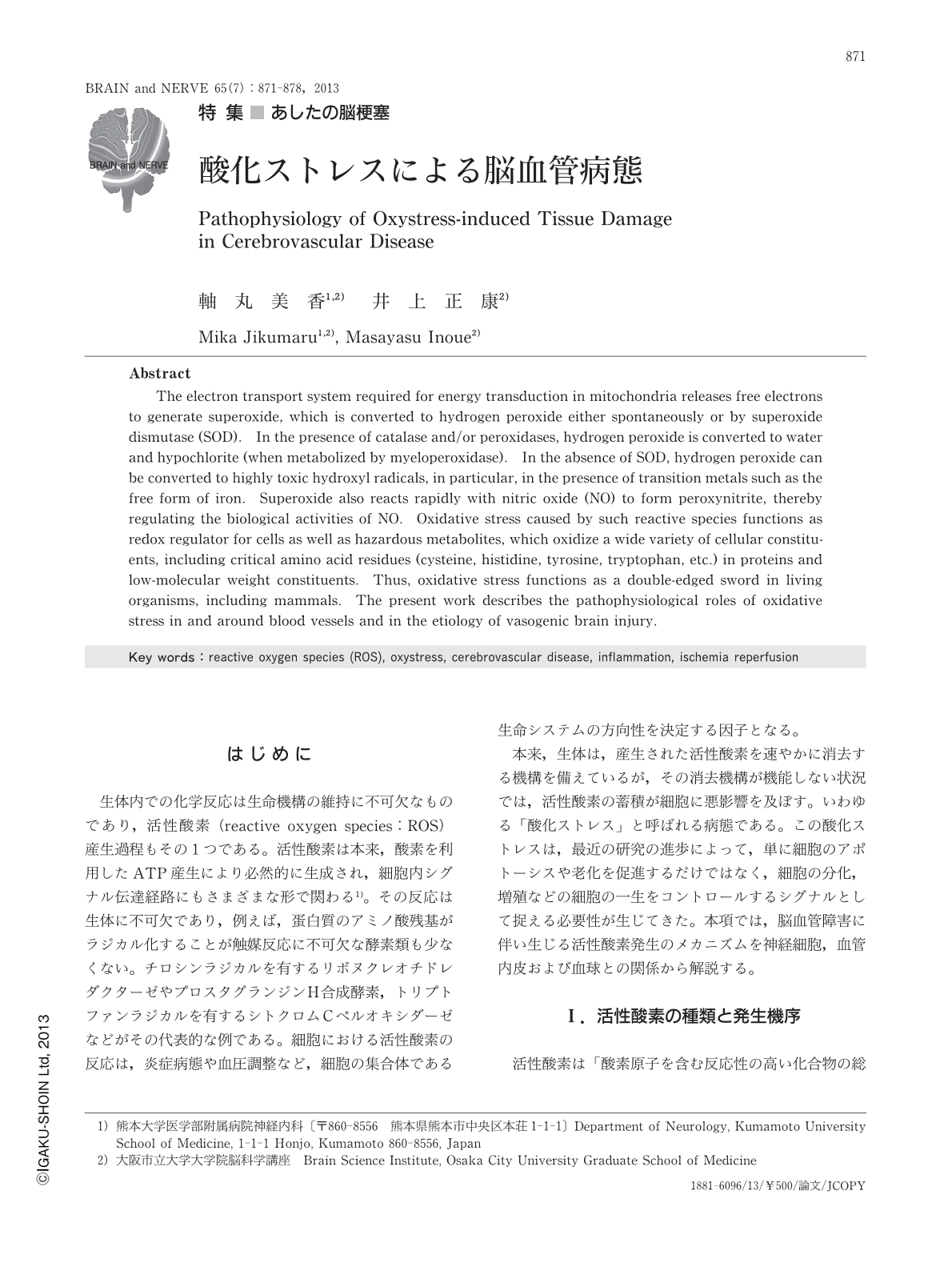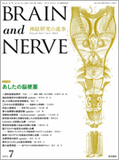Japanese
English
- 有料閲覧
- Abstract 文献概要
- 1ページ目 Look Inside
- 参考文献 Reference
はじめに
生体内での化学反応は生命機構の維持に不可欠なものであり,活性酸素(reactive oxygen species:ROS)産生過程もその1つである。活性酸素は本来,酸素を利用したATP産生により必然的に生成され,細胞内シグナル伝達経路にもさまざまな形で関わる1)。その反応は生体に不可欠であり,例えば,蛋白質のアミノ酸残基がラジカル化することが触媒反応に不可欠な酵素類も少なくない。チロシンラジカルを有するリボヌクレオチドレダクターゼやプロスタグランジンH合成酵素,トリプトファンラジカルを有するシトクロムCペルオキシダーゼなどがその代表的な例である。細胞における活性酸素の反応は,炎症病態や血圧調整など,細胞の集合体である生命システムの方向性を決定する因子となる。
本来,生体は,産生された活性酸素を速やかに消去する機構を備えているが,その消去機構が機能しない状況では,活性酸素の蓄積が細胞に悪影響を及ぼす。いわゆる「酸化ストレス」と呼ばれる病態である。この酸化ストレスは,最近の研究の進歩によって,単に細胞のアポトーシスや老化を促進するだけではなく,細胞の分化,増殖などの細胞の一生をコントロールするシグナルとして捉える必要性が生じてきた。本項では,脳血管障害に伴い生じる活性酸素発生のメカニズムを神経細胞,血管内皮および血球との関係から解説する。
Abstract
The electron transport system required for energy transduction in mitochondria releases free electrons to generate superoxide, which is converted to hydrogen peroxide either spontaneously or by superoxide dismutase (SOD). In the presence of catalase and/or peroxidases, hydrogen peroxide is converted to water and hypochlorite (when metabolized by myeloperoxidase). In the absence of SOD, hydrogen peroxide can be converted to highly toxic hydroxyl radicals, in particular, in the presence of transition metals such as the free form of iron. Superoxide also reacts rapidly with nitric oxide (NO) to form peroxynitrite, thereby regulating the biological activities of NO. Oxidative stress caused by such reactive species functions as redox regulator for cells as well as hazardous metabolites, which oxidize a wide variety of cellular constituents, including critical amino acid residues (cysteine, histidine, tyrosine, tryptophan, etc.) in proteins and low-molecular weight constituents. Thus, oxidative stress functions as a double-edged sword in living organisms, including mammals. The present work describes the pathophysiological roles of oxidative stress in and around blood vessels and in the etiology of vasogenic brain injury.

Copyright © 2013, Igaku-Shoin Ltd. All rights reserved.


